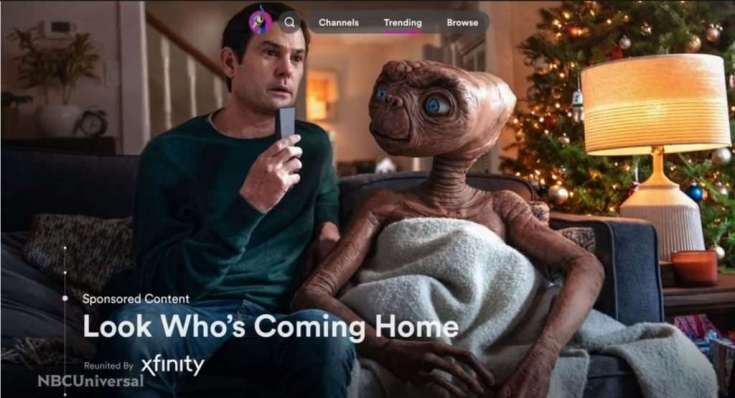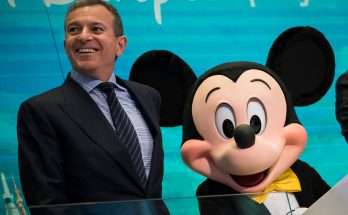
Sample of a Peacock “Trending Ad.”
NBCUniversal
The advertising market is taking a hard hit, but NBCUniversal’s streaming service, Peacock, is entering the streaming space with a stable of heavy-hitting advertising partners.
The service is currently rolling out to Comcast Xfinity customers, and will broadly launch in July. (Comcast owns NBCUniversal, which is also the parent company of CNBC.)
It comes at an interesting time.
On one hand, video consumption is growing as so many consumers are under stay-at-home orders. But the advertising ecosystem is also being hit hard as some advertisers in sharply affected markets, like travel, pull or reduce spending. Peacock was also going to launch with a big push around the 2020 Olympics, but the coronavirus pandemic spurred organizers to delay the games until 2021.
Despite these challenges, Peacock has a safety blanket in its launch partners — Costar‘s Apartments.com, Capital One, Eli Lilly, L’Oreal, Molson Coors, State Farm, Subaru, Target, Unilever and Verizon — who’ve entered into 18-month deals. They will get advertiser category exclusivity along with the ability to pilot new ad formats with NBCU. (A spokesperson said the company is talking to other advertisers about opportunities after launch.)
Peacock aims to offer a less annoying, more interactive ad experience for consumers, with features like fewer than five minutes of ads per streaming hour for both the free version of Peacock and Peacock Premium. It promises better frequency capping, meaning it won’t show the same ad twice within 30 minutes, a common annoyance for consumers. And the ads themselves want to be different the kinds of inventory you’d see on TV, like the ability for brands to sponsor collections of NBCU titles based on events or genres, or ads that attempt to get users to interact using trivia questions or product galleries.
All that, plus an ability to use data to reach the right people and to reach consumers that aren’t watching linear TV, made Peacock a compelling prospect, advertisers told CNBC.
Reaching viewers who aren’t watching TV anymore
Consumers are increasingly cutting the cord on their cable packages, moving from linear TV viewership to internet-based streaming services.
A Trade Desk survey of more than 2,600 people with YouGov, released Tuesday, found that 11% of households that still have cable TV subscriptions will cut the cord by the end of the year, a figure that jumps to 18% in the 18-34 age group that’s highly sought after by advertisers. But that could accelerate as long as live sports are suspended in the U.S.; 60% of those surveyed said live sports were the primary reason they kept cable TV subscriptions.
Free seemed to be a slightly more compelling option for those surveyed; 35% said they’d prefer to watch a free streaming service with ads or some ads for a cheaper subscription, versus 31% who said they’d prefer to pay for a subscription with no ads.
Media companies seem well aware of the trend, and are jumping into buying ad-supported streaming services. On Monday, Comcast-owned Fandango said it was buying Vudu from Walmart, following Comcast’s purchase of Xumo in February. Fox said last month it was buying Tubi.
So it makes sense for advertisers to follow the viewers.
Horizon Media’s chief investment officer David Campanelli said there are just fewer legitimate premium players in the market, and fewer ad-supported players.
“A major company like Comcast coming to market with an ad-supported product is a positive thing for advertisers, for sure,” he said.
Patty Morris, assistant VP of marketing at State Farm, said services like Peacock are crucial to reach a younger demographic that just isn’t watching TV anymore.
“At the highest level, it’s being able to reach people that we can’t reach on linear TV anymore, because they’re just not there,” she said. “There certainly is still a lot of crossover of people who [go] between linear and streaming services. There are increasingly people who aren’t in a more linear or cable environment, and they’re only using streaming.”
The 18 months of category exclusivity helps, she said.
“We know it’s a little bit of a younger demographic, and there is no category competition in that environment — that’s a big deal, especially in a category that’s as competitive as insurance,” she said.
Patrick Dodson, VP of marketing for Apartments.com at CoStar Group, also said video-on-demand is the “most evolving and emerging place where viewers are going,” adding that a large percentage of its own target audience doesn’t watch linear TV.
Horizon Media’s Campanelli said linear TV is still the best place to get reach and reach a large audience, but that’s diminishing. With ratings down and downward pressure on supply, the price increase the last couple upfronts has been “pretty extreme,” he said.
“So you need a way to offset that, somewhere else to put your money,” he said. Investing in streaming helps future-proof as viewership goes online, and also protects the bid against an inflating price of TV.
Of course, Covid-related cancellations of live programming like sports are hitting linear TV as well as Peacock, which will have both on-demand and live content. But Campanelli said that Peacock’s live coverage of the Olympics this summer, for instance, wasn’t a huge advertiser draw.
Segmenting
Digital services like Peacock can use more detailed information about users and their habits, allowing advertisers to use more sophisticated targeting than traditional TV.
Verizon’s chief media officer John Nitti said the more the company can append data and segmentation the better it is for the company and for the viewer experience.
“The very basic example I’ve used for years that’s, sadly, still relevant, is: Asking existing customers to switch to Verizon seems inherently wrong,” he said. He said the more the company knows which viewers are already Verizon customers, the better it can reach them with ads that actually make sense.
Jack Kelly, integrated media manager at Subaru of America, agreed that the more the company knows about the consumer it’s speaking to, the more it can customize certain messaging.
“That’s really what the platform allows — a better understanding of who the audience is, what the consumer behavior is,” he said.
Apartments.com’s Dodson added that this kind of setup makes it easier to test out and see which ads are performing best.
Ad formats
Verizon’s Nitti said standard ad formats that were created for linear TV aren’t always the right way to engage or to have a company’s message break through. He said on different platforms like Peacock, Amazon Prime or Twitch, different types of customers are behaving differently — and creating an opportunity to reach them in a more engaging way.
Advertisers say they’ve been working with Peacock to experiment with new ad types, which NBCU said will include formats like ads that show messaging for brands and products when a viewer pauses content, or “binge ads” that allow a sponsor to give a viewer a fourth ad-free episode after they watch three episodes.
The key is moving away from the kind of advertising that leads consumers to grow so frustrated they’d rather just pay for an ad-free service.
“If we continue to make advertising that frustrates people or set up consumer experience that frustrates people, we end up in a situation where we have people that are willing to buy platforms that get rid of advertising,” Subaru’s Kelly said.
State Farm’s Morris said brands have an opportunity with Peacock to reach consumers “in a valuable way, not just in a ‘we want to show you more ads’ way.” She said appropriate ad loads, new ad types and the opportunity for a two-way conversation will help.
“I think there will be things that we do that we haven’t even conceived of yet,” she said.
Disclosure: Peacock is the streaming service of NBCUniversal, the parent company of CNBC. Comcast owns NBCUniversal.


